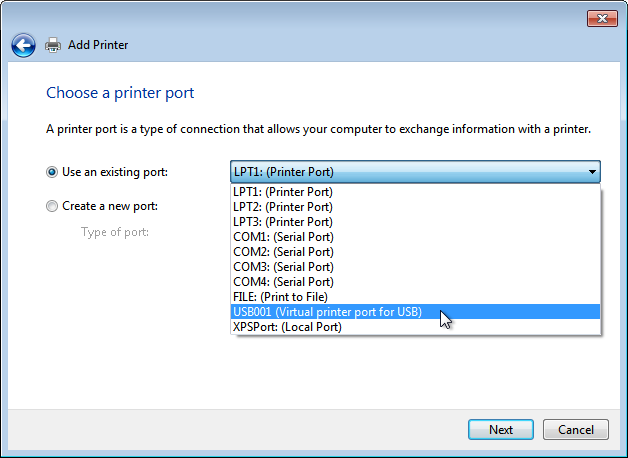I am currently using Windows XP and use the net use command to capture the output to lpt1: and this is sent to the network printer. Works great on XP and Windows 7 32bit. The 64bit of Window 7 using the virtual pc and xp mode is the challange. Every path I followed on Microsoft's site sent me back to how printing works on XP. In this line, '-lpt1' refers to the virtual port we created in the first line. '0x378 7' indicates we want to attach it to memory address 0x378 using interrupt 7. If you wanted to use 0x278, another port that most software will recognize, you would use '0x278 5', since '5' is the interrupt usually used. It looks like dosbox may not support parallel ports without patches.It also appears that virtualbox also doesn't yet support parallel ports. But even if they did support parallel ports, you'd still need something on the other end - either a debug-driver on your host operating system, or something like a USB to Parallel adapter (available at the usual retailers).
Setting up a printer to use an LPT port in Windows 10.
In Microsoft’s great wisdom, with the release of Windows 10, they did away with the default ability to use LPT ports for legacy printing devices.
Fear not, however, there is a way to turn it back on! This guide will lead you through changing the setting so that you may use your legacy device.
The first step in our journey will take us to the Windows Device manager. To get there click in the search box adjacent to the Windows icon in the bottom left hand corner. Type in “Device Manager”.
As you type, Windows should be searching for a program matching your search. Once you see 'Device Manager', click on the icon. With the 'Device Manager' open, look for “Ports (COM & LPT)” in the list of different device types.
Once found, expand the selection:
Right click on “ECP Printer Port (LPT1)” and choose “Properties”.


Navigate to the “Port Settings” tab and check the box to “Enable legacy Plug and Play detection”.
Saving this setting change MAY prompt you to reboot your computer. DO NOT DO THIS. Rebooting will turn this setting off. Frazer is not suggesting that your computer should stay on forever with no reboots. Basically Frazer just wants you, the dealer, to know that this setting will be reset every time a computer reboot is done. Why Microsoft prompts you to reboot after changing a setting that is reset after a reboot is a philosophical question I’m not prepared to answer today.
Lpt1 Virtual Port Windows 1000
From here, you should be set to navigate to “Devices and Printers” to print a test page. If the test page works, you should be all set.
Some of the Application Software use LPT1 port for printing the output like Receipts or reports.
But the Latest PCs not coming with the LPT1 / Parallel Port inbuilt.
So how to solve this?
We can use the USB Printer as LPT 1 Printer
Step1: open command prompt by typing CMD on Run
Step 2: Type the command

Net Use LPT1: YourComputerNameUSBPrinterShareName /PERSISTENT:YES
Dont forget to type PERSISTENT:yes , otherwise the setting will change on next boot.
Another method is
Lpt1 Virtual Port Windows 101
Assign the LPT1 port to your USB port
1) Close all programs
2) Click on the “Windows” – “Start” button
3) Choose “Run”
4) Type in “CMD” and press enter
Note: You should now be at what’s called the “DOS” prompt,
which is a black and white screen.
Note: You will need to know the name of your USB port. Follow steps 1 through 7 above “In Windows” to get the USB port name. Your USB port name will be similiar to USB01PORT. Step 5 below uses the example USB01PORT name. You will need to substitute your actual USB port name.
5) Type in: NET USE USB01PORT LPT1
6) Press the enter key.
7) Close the “CMD” window.
8) Try printing again.